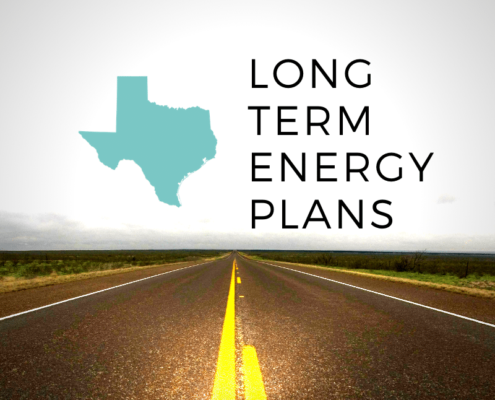Last Updated on September 14, 2022 by Mary Pressler
The 30% Solar Tax Credit Is Available Through 2032
The US solar industry received a major incentive from the federal government in August 2022. The Inflation Reduction Act (IRA) was passed by Congress on Friday the 12th and signed by President Biden on Tuesday the 16th. The IRA includes the following benefits for solar power and other clean energy technologies:
- The solar federal tax credit has been increased from 26% to 30% and extended until 2034.
- Energy storage systems now have a dedicated federal tax credit. Previously, battery systems would only qualify if they were part of a solar installation.
- The federal tax credit for electric vehicles has been extended through 2032, and there is now a tax credit for used EVs (with only one previous owner).
Without the IRA, the solar Investment Tax Credit (ITC) would have stayed at 26% in 2022, before decreasing to 22% in 2023. Only a 10% tax credit would have remained from 2024 onward, available exclusively for solar installations owned by businesses. Thanks to the Act, solar power systems now get a 30% federal tax credit for 10 years, available according to the following schedule:
| Type of Solar PV System Owner | Federal Tax Credit Schedule |
| Home | 30% from 2022 – 2032
26% in 2033 22% in 2034 0% in 2035 (tax credit expires) |
| Business | 30% from 2022 – 2033
22.5% in 2034 15% in 2035 0% in 2036 (tax credit expires) |
As you can see, both homes and businesses will have access to the 30% solar ITC during the next 10 years (2023-2032). The phase-out schedule is slightly different for each market segment, but the full benefit remains available for an entire decade.
According to the Solar Energy Industries Association (SEIA), the ITC has contributed greatly to the growth of solar power in the US:
- On average, US solar power capacity has increased by 33% annually during the last decade. Since the ITC first became available in 2006, the solar industry has grown by more than 10,000%.
- The solar federal tax credit was originally 30%, but it was reduced to 26% in 2020. The Inflation Reduction Act restores the 30% tax credit for 10 years.
- The US installed 23.6 gigawatts (23.6 million kW) of solar capacity in 2021, representing 46% of the total generation capacity installed that year.
Home solar systems are eligible for the ITC under Section 25D of the US Internal Revenue Code, while commercial solar projects are eligible under Section 48.
The benefits of solar power systems go beyond clean electricity at a low cost; the solar industry also creates many jobs. According to the US Bureau of Labor Statistics, the occupation with the 5th highest growth forecast by 2030 is solar photovoltaic installer, with an expected 52% increase in employment.
How Much Does the Federal Solar Tax Credit Save?
Since the solar tax credit is a percentage calculation, the dollar amount saved depends on project costs. However, savings at each project scale can be estimated with the typical installation costs from the latest SEIA quarterly report (Q2 2022):
| Market Segment | Average PV System Price | 30% ITC per Kilowatt |
| Residential | $3.07 / watt | $921 |
| Commercial | $1.64 / watt | $492 |
| Utility Scale, Fixed Mount | $0.85 / watt | $255 |
| Utility Scale, with Solar Tracking | $1.01 / watt | $303 |
For example, the owner of a 500-kW commercial solar system can expect to invest around $820,000, claiming a tax deduction of $246,000 (30%). If the ITC had decreased to 10% in 2022 (as originally planned), the tax credit for this system would only be $82,000 ($164,000 less).
This is a very simplified calculation, and the actual cost of installing solar panels varies depending on project conditions. However, this example shows how solar PV system owners will be saving thousands of dollars with the 10-year ITC extension.
Commercial Solar Tax Credit: Additional Requirements and Bonus Credits
The IRA did not introduce any major changes to the requirements for residential solar systems. However, there are new requirements for business owners who plan to install solar panels, and also the possibility of getting bonus tax credits. This means commercial solar systems can now get federal tax credits higher or lower than 30%.
Not much has changed for commercial solar systems below 1 MW of capacity. The base tax credit is 30% just like in residential installations, but there are three bonus tax credits available:
| Bonus Tax Credit Description | Requirements |
| 10% adder for domestic content | Solar projects that meet the following conditions:
– 100% iron and steel made in the US. – 40% other manufactured components made in the US, including solar panels and inverters. |
| 10% adder for solar projects in designated energy communities | Projects located in locations designated as “energy communities”, which include:
– Brownfields – Locations with high employment or high tax revenue from the fossil fuel industry – Sites that were previously coal mines or coal-fired power plants. |
| 10% or 20% adder for solar projects that benefit low-income households | 10% adder for solar projects that benefit low-income communities
OR 20% adder for Low-Income Residential Building Projects and Low-Income Economic Benefit Projects |
For business-owned solar projects larger than 1 MW, the base federal tax credit is only 6%. To get the full 30% tax credit, solar projects of this size must meet certain labor requirements:
- Technical personnel must be paid prevailing wages as determined by the US Department of Labor.
- There is now a minimum percentage of man-hours that must be completed by qualified apprentices. The apprentice labor requirement starts at 10% for solar projects that begin construction by the end of 2022, increasing to 12.5% in 2023 and 15% from 2024 onwards.
The tax credit bonuses for domestic content, energy communities, and low-income benefits are also available for solar PV systems larger than 1 MW. However, the 10% bonuses for domestic content and energy communities are only available for projects that meet the prevailing wage and apprenticeship requirements. Otherwise, these two bonuses are reduced from 10% to 2%. The bonuses for solar projects that benefit low-income communities (10% / 20%) are not affected by labor requirements.
GOOD NEWS: Starting from 2025, the business federal tax credit will become available for all renewable energy technologies, not only solar power.
The New Production Tax Credit for Commercial Solar Power
Business owners who install solar PV systems can now choose not to claim the Investment Tax Credit (ITC) as a percentage of upfront costs, and instead claim a Production Tax Credit (PTC) based on kilowatt-hour output.
Solar projects that meet the prevailing wage and apprenticeship requirements can claim a PTC of 2.6 cents/kWh, which is adjusted annually based on inflation. The solar PTC is reduced to only 0.5 cents/kWh for projects that don’t meet the labor requirements. Similar to the ITC, the PTC is not conditioned by labor requirements in projects below 1 MW (they get the full value of 2.6 cents/kWh).
Businesses who choose the solar PTC can also get bonuses for domestic content and projects located in energy communities. Both bonuses have the same value:
- 3 cents/kWh for solar projects below 1 MW, and larger projects that meet the prevailing wage and apprenticeship requirements.
- 1 cents/kWh for solar projects over 1 MW that don’t meet labor requirements.
The IRS will adjust the solar PTC each year based on inflation, and the benefit disappears in 2036.
The New 30% Federal Tax Credit for Energy Storage
Energy storage systems could qualify for the federal tax credit even before the Inflation Reduction Act, but the requirements were highly restrictive.
- Residential battery systems would only qualify if 100% of their charge came from onsite solar panels. Homeowners could not use electricity from the grid, even if generated off-site by solar panels or wind turbines.
- Business-owned battery systems would only qualify if at least 75% of their charge came from onsite solar panels. In addition, the federal tax credit would get reduced according to the solar charging percentage.
For example, a battery system in a commercial building getting 85% of its charge from solar panels and 15% from the grid would only get 85% of the tax credit available.
The Inflation Reduction Act has removed this limitation, and the 30% federal tax credit is now available for:
- Residential energy storage systems with at least 3 kWh of capacity.
- Commercial energy storage systems with at least 5 kWh of capacity.
There are many cases where charging a battery with solar panels only is not feasible. Now these energy storage systems will qualify for the 30% federal tax credit.
Keep in mind that the federal tax credit for energy storage is not available immediately. All battery systems installed in 2022 are still subject to the solar charging requirements (100% for residential systems and 75% for commercial systems). Stand-alone energy storage will qualify for the 30% tax credit starting from 2023.
The New Federal Tax Credit for US-Based Solar Manufacturers
The Inflation Reduction Act also introduced tax incentives for solar manufacturing in the US. This means the 30% federal tax credit is not only available for homes and businesses who use solar panels, but also for PV technology manufacturers.
There is a total of $10 billion available in federal tax credits for investments in solar manufacturing capacity, located within the US. There is a base tax credit of 6%, which increases to 30% for solar manufacturers who meet prevailing wage and apprenticeship requirements.
Solar manufacturers can also choose to receive a federal tax credit based on their production. The following incentives are available as of 2022:
- PV modules = 7 cents / watt DC
- Thin-film PV cells = 5 cents / watt DC
- Crystalline silicon PV cells = 4 cents / watt DC
- Crystalline silicon PV wafers = $12 / square meter
- Solar grade polysilicon = $12 / kg
- Polymer backsheets = $0.40 / square meter
There are also tax credits for the production of inverters, solar trackers, and battery components.
- Central inverter = 0.25 cents / watt AC
- Utility inverter = 1.50 cents / watt AC
- Commercial inverter = 2.00 cents / watt AC
- Residential inverter = 6.50 cents / watt AC
- Microinverter = 11.00 cents / watt AC
Solar tracker components
- Torque tubes / longitudinal purlins = $0.87 / kg
- Structural fasteners = $2.28 / kg
Battery components
- Active electrode materials = 10%
- Battery cells = $35 / kWh
- Battery modules = $10 / kWh
- Battery modules that don’t use cells = $45 / kWh
- Critical materials = 10%
Keep in mind that these production tax credits are given to solar manufacturers, not installation companies and end users. However, this incentive can help reduce the cost of US-made solar components.
If you want to learn more, the Solar Energy Industries Association (SEIA) has a great summary of the renewable energy benefits introduced by the Inflation Reduction Act.










